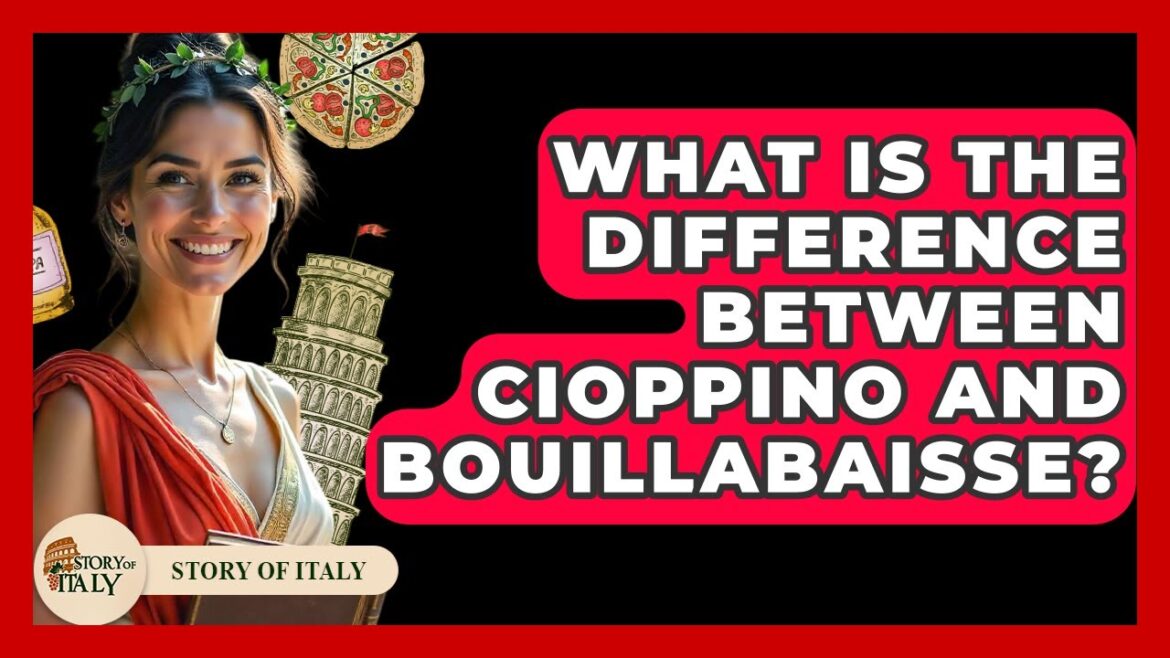What Is The Difference Between Cioppino And Bouillabaisse? In this video, we will take a closer look at two beloved seafood stews that have captured the hearts of many: Cioppino and Bouillabaisse. Both dishes are celebrated for their unique flavors and cultural significance, but they each have their own distinct characteristics that set them apart. We’ll discuss the origins of Cioppino and how it came to be a staple in San Francisco, highlighting the rich tomato base and variety of seafood that make it a hearty choice for seafood lovers.
On the other hand, we will also explore Bouillabaisse, a classic from the Provence region of France. This dish features a lighter flavor profile that incorporates a white fish stock base, along with aromatic ingredients that give it a refreshing taste. We’ll touch on the traditional components of Bouillabaisse and how it reflects the culinary traditions of the Mediterranean.
Join us as we navigate through the delightful world of these two stews, and discover the stories behind them. Whether you are a fan of bold flavors or prefer a more delicate seafood experience, there is something for everyone in this culinary exploration. Don’t forget to subscribe to our channel for more engaging content about Italian cuisine and beyond!
⬇️ Subscribe to our channel for more valuable insights.
🔗Subscribe: https://www.youtube.com/@StoryOfItaly/?sub_confirmation=1
#Cioppino #Bouillabaisse #SeafoodStew #ItalianCuisine #FrenchCuisine #MediterraneanFood #CulinaryTraditions #FoodLovers #SeafoodRecipes #CookingTips #GourmetFood #CulinaryJourney #FoodHistory #RecipeIdeas #TastyDishes
About Us: Welcome to Story of Italy, your gateway to exploring the rich tapestry of Italian culture, history, and lifestyle. Our channel is dedicated to uncovering the fascinating narratives that shape Italy, from its ancient roots to modern-day marvels.
Please note that all content on this channel is for informational purposes only. We encourage you to conduct your own research and due diligence before making any decisions based on the information provided. Thank you for joining us on this journey through the Story of Italy!
What is the difference between chapino and bullyabase? If you are curious about the differences between chapino and bullyabase, you are in for a treat. These two seafood stews are popular in their own right, but they come from different culinary traditions. Let’s break down what makes each dish special. Chapino is a seafood stew that originated in the San Francisco area. It was brought to the United States by Italian immigrant fishermen in the late 1800s. This dish features a rich tomato base, making it hearty and flavorful. You will typically find a mix of seafood in chapino, including crab, shrimp, clams, and various types of fish. Onions and herbs like oregano are often added to enhance the taste. The dish reflects the resourceful use of leftover seafood by those early immigrants, creating a comforting meal that many enjoy today. In contrast, Bullyabase hails from France, specifically the Proce region. This seafood stew has a lighter flavor profile compared to chapino. Bullyabase is known for its white fish stock base with some tomatoes added. This gives it a more delicate taste. The stew often includes unique ingredients such as saffron, potatoes, fennel, and orange peel, which are not typically found in chapino. Authentic bullyabase traditionally requires scorpion fish, which is native to proce. However, you might find substitutes like snapper or sea bass in other regions. When it comes to the overall experience, chapino offers a robust and hearty meal, perfect for those who enjoy bold flavors. Booya base on the other hand presents a more refined seafood experience appealing to those who appreciate lighter aromatic broths. While neither dish is strictly Italian, both reflected the rich seafood traditions of the Mediterranean. They showcase the adaptability of local ingredients and the creativity of the cooks who prepare them. So whether you are enjoying a bowl of chapino or bullyabase, you are indulging in a delightful part of Mediterranean cuisine. Each dish tells a story of its origins and the people who brought it to life.

